
Galeus is a genus of catshark, belonging to the family Scyliorhinidae, commonly known as sawtail catsharks in reference to a distinctive saw-toothed crest of enlarged dermal denticles, found along the upper edges of their caudal fins. They are found in the Atlantic, the western and central Pacific, and the Gulf of California, inhabiting deep waters at or close to the sea floor. Members of this genus are rather small, slim sharks with firm bodies and thick, rough skin. Their heads are usually fairly long and pointed, and have large mouths with well-developed furrows at the corners. They have large pectoral and anal fins, and two similar dorsal fins placed well back. Many species are ornately patterned with dark saddles and/or blotches. Sawtail catsharks feed on various invertebrates and fishes, and may be either egg-laying or live-bearing. These harmless sharks are sometimes caught as bycatch but are of minimal commercial value.
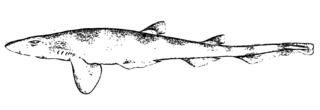
The Antilles catshark is a common but little-known species of catshark, part of the family Scyliorhinidae. It is found on or near the bottom at a depth of 293–695 m (961–2,280 ft) off Florida and the West Indies from Jamaica to Martinique. It was once regarded as a subspecies of the similar roughtail catshark, along with the longfin sawtail catshark. Growing to 46 cm (18 in) long, the Antilles catshark is a slender species with a marbled color pattern of dark saddles and blotches, as well as a crest of enlarge dermal denticles along the front part of its dorsal caudal fin margin. It feeds on shrimp and may have schooling habits. Reproduction is oviparous.

The blackmouth catshark is a species of catshark, and part of the family Scyliorhinidae, common in the northeastern Atlantic Ocean from Iceland to Senegal, including the Mediterranean Sea. It is typically found over the continental slope at depths of 150–1,400 m (490–4,590 ft), on or near muddy bottoms. The youngest sharks generally inhabit shallower water than the older juveniles and adults. This slim-bodied species is characterized by the black interior of its mouth, a marbled pattern of pale-edged brownish saddles or blotches along its back and tail, and a prominent saw-toothed crest of enlarged dermal denticles along the upper edge of its caudal fin. It reaches lengths of 50–79 cm (20–31 in), with sharks in the Atlantic growing larger than those in the Mediterranean.

The Atlantic sawtail catshark is a little-known species of catshark, part of the family Scyliorhinidae, found in a small area of the northeastern Atlantic Ocean, centered on the Strait of Gibraltar and the Alborán Sea. It is found on or close to the bottom over the continental slope, mostly at depths of 400–600 m (1,300–2,000 ft). This shark closely resembles, and was once thought to be the same species as, the blackmouth catshark ; both are slender with a series of dark saddles and blotches along the back and tail, and a prominent crest of enlarged dermal denticles along the dorsal edge of the caudal fin. It differs subtly from G. melastomus in characters including snout length, caudal peduncle depth, and the color of the furrows at the corner of its mouth.
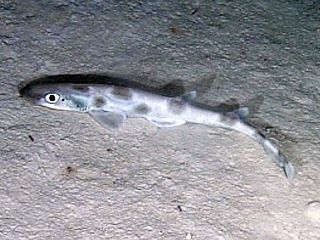
The roughtail catshark or marbled catshark is a common species of catshark, part of the family Scyliorhinidae. It is found at a depth of 36–702 m (118–2,303 ft) in the northwestern Atlantic Ocean, the Gulf of Mexico, and the Caribbean Sea, from North Carolina to Costa Rica. Individuals of different sexes and ages are segregated to some degree. A small species not exceeding 33 cm (13 in) in length, the roughtail catshark has a slender body with a marbled color pattern of dark saddles and spots, and a prominent crest of enlarged dermal denticles along the dorsal edge of its caudal fin. This species feeds mainly on shrimp and is oviparous. It is caught incidentally in shrimp trawls, though trawl fisheries within its range mostly do not operate at the depths it inhabits. As a result, the International Union for Conservation of Nature has listed it under Least Concern.

The Australian sawtail catshark is a common species of catshark, and part of the family Scyliorhinidae, endemic to southern Australian waters. It is found on or near the bottom of the outer continental shelf and upper continental slope, at depths of 85 to 823 m. This slim-bodied species is characterized by crests of enlarged dermal denticles along both the dorsal and ventral edges of its caudal fin and caudal peduncle, along with a color pattern of broad, dark saddles outlined in white. It can grow to 61 cm (24 in) in length. The Australian sawtail catshark feeds mainly on fishes, crustaceans, and cephalopods. Females are oviparous and lay eggs enclosed by capsules. This species is often caught incidentally by commercial bottom trawl fisheries, but is not significantly threatened by fishing activity. Thus, it has been assessed as of Least Concern by the International Union for Conservation of Nature (IUCN).

The gecko catshark is a species of catshark, part of the family Scyliorhinidae, native to the northwestern Pacific Ocean from southern Japan to Taiwan, and possibly also off Vietnam. It is a common, demersal species found at depths of 100–900 m (330–2,950 ft). Its body is slender, with a pattern of dark saddles and blotches. The dorsal and caudal fins are edged in white, and there is a prominent crest of enlarged dermal denticles along the dorsal edge of the caudal fin. The gecko catshark is a schooling, opportunistic predator of bony fishes, cephalopods, and crustaceans. It is oviparous, with females producing two vase-shaped egg capsules at a time. This species is captured as bycatch, but does not appear to be threatened by fishery activities at present and has been assessed as Least Concern by the International Union for Conservation of Nature (IUCN).
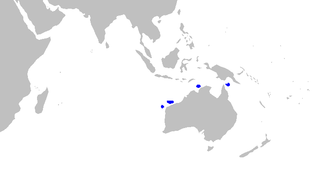
The slender sawtail catshark is a little-known species of catshark, part of the family Scyliorhinidae, endemic to northern Australia. It is found over the continental slope in 290–470 m (950–1,540 ft) on water. Growing to 34 cm (13 in) long, this shark has a slim gray body with four dark saddle markings below the dorsal fins and on the caudal fin, as well as a prominent crest of enlarged dermal denticles along the dorsal edge of the caudal fin. The slender sawtail catshark is not valued by fisheries but is taken as bycatch. The International Union for Conservation of Nature (IUCN) presently lacks enough information to assess its conservation status.

The longnose sawtail catshark is a little-known species of catshark, part of the family Scyliorhinidae, found off the northwestern Pacific islands of Amami Ōshima, Ogasawara, and Izu at depths of 350–550 m (1,150–1,800 ft). Reaching a length of 80 cm (31 in), it is characterized by a long flattened snout, a long space between the pelvic and anal fins, and a crest of enlarged dermal denticles along the dorsal caudal fin edge. Adults are plain dark gray above, while juveniles have a few faint dark saddles on the back and tail. The International Union for Conservation of Nature (IUCN) presently lacks the information to assess the conservation status of this species.
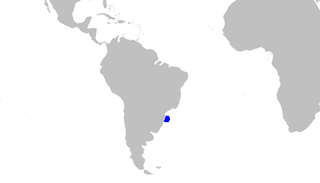
The southern sawtail catshark is a species of catshark, part of the family Scyliorhinidae, endemic to southern Brazil. It inhabits deepwater reefs on the upper continental slope at a depth of 236–600 m (774–1,969 ft). Reaching at least 43 cm (17 in) in length, this slim-bodied species closely resembles the Antilles catshark. It has a prominent crest of enlarged dermal denticles along the dorsal edge of the caudal fin, as well as a distinctive color pattern of dark oval blotches, outlined in white, along its back. The southern sawtail catshark is oviparous, with females producing reddish egg capsules. The International Union for Conservation of Nature (IUCN) has assessed it as Vulnerable; it is often taken as bycatch and may be threatened by intensifying squid fishing.

The mouse catshark is a species of catshark and part of the family Scyliorhinidae. It is common in the northeastern Atlantic Ocean from Iceland to Western Sahara. There is much taxonomic confusion regarding this species in Icelandic waters, where it may be confounded with another species of Galeus or Apristurus. Probably not exceeding 49 cm (19 in) long, the mouse catshark has a uniformly brown body and is characterized by large, rounded pelvic fins and crests of enlarged dermal denticles along both the dorsal and ventral caudal fin margins. In addition, in adult males the inner margins of the pelvic fins are merged into an "apron".

The broadfin sawtail catshark is a common species of catshark, part of the family Scyliorhinidae. It is found on or near the bottom at depths of 150–540 m (490–1,770 ft), from southeastern Japan to the East China Sea. A slender species growing to 68 cm (27 in) long, this shark is characterized by a fairly long, pointed snout, a series of indistinct, dark saddles along its back and tail, and a prominent crest of enlarged dermal denticles along the dorsal edge of its caudal fin. In addition, adult males have very long claspers that reach past the anal fin. The broadfin sawtail catshark is an opportunistic predator of bony fishes, cephalopods, and crustaceans, with immature and mature sharks being primarily piscivorous. It is oviparous and reproduces year-round. The International Union for Conservation of Nature (IUCN) presently lacks the information to assess the conservation status of this species.
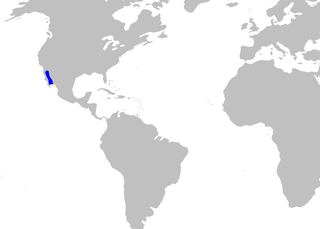
The peppered catshark is a common but little-known species of catshark, part of the family Scyliorhinidae, inhabiting depths of 130–1,326 m (427–4,350 ft) in the northern Gulf of California. It is found on or near the ocean floor, and conducts seasonal migrations, spending winter in deeper water. Reaching a length of 37 cm (15 in), this species has a slender grayish body with a fine covering of black dots. On the dorsal edge of its caudal fin is a prominent crest of enlarged dermal denticles. It is oviparous, with the reproductive period probably lasting from May to September. The International Union for Conservation of Nature (IUCN) has listed the peppered catshark under Least Concern, as it faces no significant threats from human activity.

The African sawtail catshark is a species of catshark, part of the family Scyliorhinidae. Demersal in nature, it is found at depths of 160–720 m (520–2,360 ft) off the western African coast from Morocco to South Africa. This slender species has a rather long, pointed snout, a series of dark saddles along the back and tail, and a prominent crest of enlarged dermal denticles along the upper edge of the caudal fin. Its maximum known length is 46 cm (18 in).

The blacktip sawtail catshark is a species of catshark, and part of the family Scyliorhinidae, found off the coasts of Taiwan and the Philippines. It is demersal in nature and occurs deeper than 60 m (200 ft). Growing up to 46 cm (18 in) long, this slim-bodied species is characterized by its plain brownish dorsal coloration with dark tips on the dorsal and caudal fins, and a prominent crest of enlarged dermal denticles on the upper edge of the caudal fin. It is oviparous, with females producing encapsulated eggs two at a time year-round. The blacktip sawtail catshark is caught incidentally in bottom trawls and used for fishmeal in Taiwan.

The dwarf sawtail catshark is a little-known species of catshark, belonging to the family Scyliorhinidae, found exclusively in the deep waters off Luzon in the Philippines. Unlike other members of its genus, this slender, diminutive shark has a short, rounded snout and very short furrows at the corners of its jaws. It has indistinct darker saddles beneath each dorsal fin and two dark bands on the caudal fin, as well as a prominent crest of enlarged dermal denticles along the upper caudal fin margin.
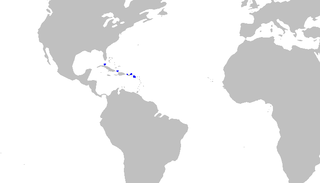
Springer's sawtail catshark is a little-known species of catshark, belonging to the family Scyliorhinidae, found in waters 457–699 m (1,499–2,293 ft) deep off the islands of the Antilles, from Cuba to the Leewards. A small, slim-bodied species reaching a length of 48 cm (19 in), the Springer's sawtail catshark can be identified by its color pattern of horizontal dark stripes in front of the first dorsal fin, and dark dorsal saddles behind. It is additionally characterized by the presence of saw-toothed crests, made of enlarged dermal denticles along both the dorsal and the ventral edges of the caudal fin. The Springer's sawtail catshark is oviparous.

The northern sawtail catshark is a little-known species of catshark, and part of the family Scyliorhinidae, endemic to northeastern Australia. It is demersal in nature and inhabits the upper continental slope at a depth of 300–420 m (980–1,380 ft). A small, slender species growing no longer than 42 cm (17 in), the northern sawtail catshark is characterized by a series of dark, narrow saddles along its back and tail, and rows of prominently enlarged dermal denticles along the upper edge of its caudal fin and the underside of its caudal peduncle. The International Union for Conservation of Nature (IUCN) does not yet have enough information to assess its conservation status.
Figaro is a genus of catshark, and part of the family Scyliorhinidae. Until 2008, Figaro was generally considered to be a subgenus of Galeus. The two known species are found off Australia, inhabiting deep, offshore waters on or near the bottom. Figaro contains small, slender, firm-bodied sharks that bear distinctive crests of enlarged, spiny dermal denticles along the dorsal and ventral edges of their short caudal fins. The caudal peduncle is relatively long, such as that the anal and caudal fins are some distance apart. In adult males, the inner margins of the pelvic fins are fused together to form a subtle "apron" over the claspers. F. boardmani is a predator of fishes, crustaceans, and cephalopods, and is oviparous; less is known about the F. striatus. Both are harmless and are of no economic importance.
The phallic catshark is a little-known species of catshark, belonging to the family Scyliorhinidae. It is found on or near the ocean floor, in the deep waters off New Caledonia and Vanuatu. A slender species attaining a length of 46 cm (18 in), it is characterized by a long caudal fin bearing a crest of enlarged dermal denticles along the dorsal margin, and very long claspers in adult males. This shark is gray-colored, with four dark saddles along the back and tail.




















